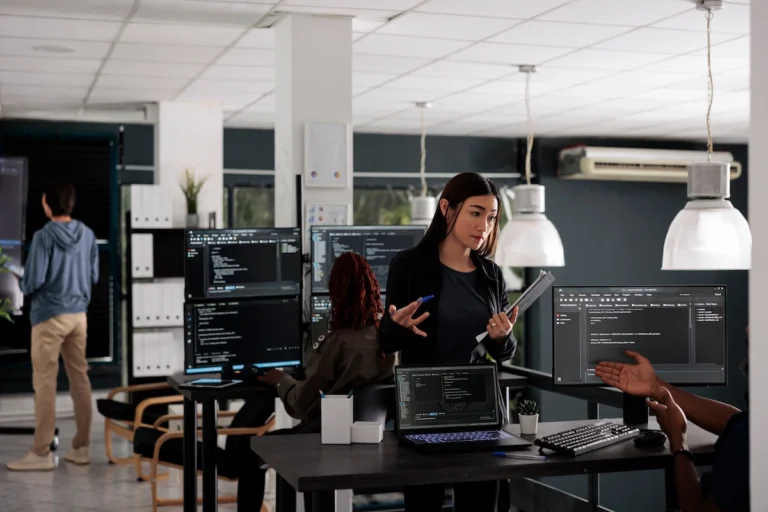VGTR expert Lewis Songaila explains which of your game development costs you can claim for under Video Games Tax Relief.
Video Games Tax Relief is an excellent source of funding for UK game developers.
Last year alone, this generous scheme provided more than £120 million in relief and cash credits to 350 businesses.
That’s an average of more than £340,000 per claim.
VGTR works by refunding companies up to 20% of their investment in game development. The scheme has no minimum or maximum qualifying spend, meaning you can claim relief on as little as £100 or more than £100 million.
That is, as long as at least 25% of your expenditure was incurred in the UK or EEA.
Exactly how much funding you’ll receive primarily depends on your studio’s financial situation and how much you invested in game development.
However, not all development costs qualify for Video Games Tax Relief.
Only core expenditure, meaning costs related to a game’s design, testing, production, and post-release expansion work are eligible for relief.
Spending on pre-production design, distribution, debugging, and post-release maintenance does not qualify.
Let’s take a closer look at the kinds of costs you can include in your claim.
Core Expenditure Costs
In all probability, your core expenditure will be mostly made up of staff costs for programmers, sound engineers, game testers, and so on.
The staff costs you can claim relief on are:
- Salaries
- Wages
- Class 1 National Insurance Contributions
- Pension fund contributions
- Bonuses
Bear in mind that some of your staff will be working on multiple projects and various stages of your games’ construction.
For this reason, you generally shouldn’t claim VGTR on 100% of an employee’s costs.
Instead, you should claim a percentage of their costs that reflects how much time spent on core development work.
As an example, let’s say that one of your programmers spent 50% of their time designing levels for a VGTR-eligible game, and the other 50% on another, ineligible project.
In this situation, you should only assign half their employment costs to your claim.
Dividing up costs like this is called apportionment.
Design vs Design
Perhaps the most complicated part of claiming staff costs is distinguishing between design that’s related to game development, which is eligible for VGTR, and design that forms part of initial concept work, which is not.
In HMRC’s eyes, initial concept work determines whether a video game is commercially feasible.
It answers questions like could we make this game? What elements should it include to make it popular? What return are we expecting on our investment?
To quote HMRC’s guidance:
“Initial concept design is the stage of creation of a video game in which the project progresses from the initial concept to the point at which a decision can be taken whether or not it should proceed.”
Meanwhile, design related to game development occurs after the decision to build a game has been taken, but before the actual production has begun.
Or, as HMRC puts it:
“Design is the stage that typically occurs once the decision to proceed with the video game has been taken, but prior to production. It is also known as pre-production.”
Make sure you keep this subtle distinction in mind when apportioning employment costs, as well as other expenses that span multiple parts of your business.
Eligible Non-Staff Costs
Thankfully, staff costs are not the only investment that is eligible for VGTR.
Here is a selection of other expenses that might form part of your core expenditure:
- Fees for outsourced development work*
- Invoices for externally-provided workers
- Payments to actors
- Rental costs for spaces needed for motion capture animation
- Bills for purchasing computer hardware and licensing software
- Overheads like rent and utilities
*Note: You can only claim VGTR on up to £1 million of outsourced development work. Most studios will fall well below this limit, but larger studios and publishers might be affected.
Like staff costs, you should apportion these expenses based on how much of each investment was employed during the core development phase of your game’s production.
Maximise Your VGTR
If you want to claim as much Video Games Tax Relief as possible, you need to track down every penny of eligible core expenditure your company has made over the last financial year.
To do that, you need to have a complete understanding of the HMRC’s rules regarding VGTR and maintain excellent records of your expenditure over the course of your game’s development.
But take care. HMRC’s tax inspectors have a keen eye for ineligible costs. And they will willingly dole out expensive and time-consuming punishments, like enquiries, for companies that overclaim.
So don’t be too overzealous when it comes to identifying or apportioning your costs, or you’ll risk the ire of HMRC.
Get Specialist Help
If you’re unsure about something in your claim, uncertain whether you should include a specific cost in your submission, or are worried that you’ve broken HMRC’s rules, it’s always best to speak to a specialist.
Just drop us a message, and one of GrantTree’s VGTR specialists will be happy to help with your claim.






